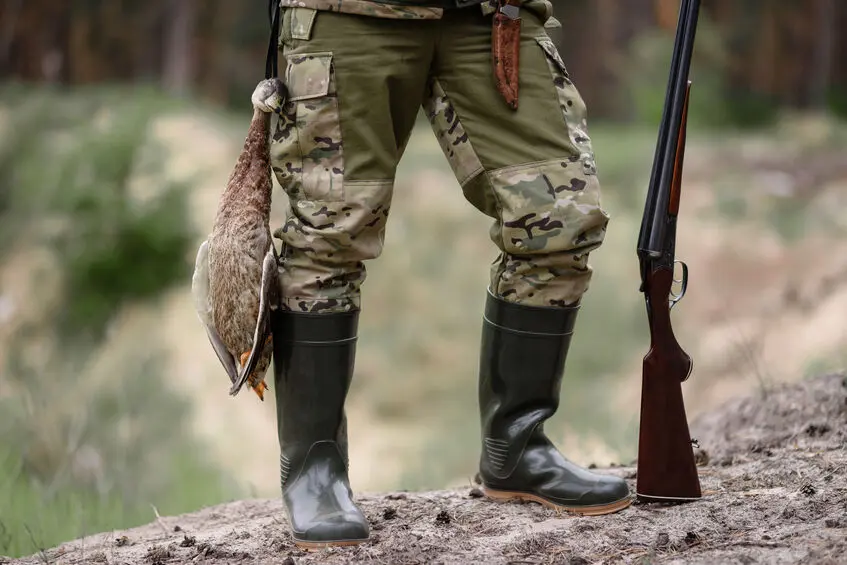Hunting boots are more than just footwear; they’re your trusted companions in the wild, navigating rugged terrains and weather conditions while keeping your feet comfortable and protected. But with many options available, knowing what to look for in hunting boots is crucial for ensuring you make the right choice.
Whether you’re a seasoned hunter or a novice trekker, understanding the key features when selecting hunting boots can significantly enhance your outdoor experience.
From materials and insulation to tread design and fit, each aspect plays a vital role in determining the performance and comfort of your boots in the field.
In this guide, we’ll break down the essential factors to help you make an informed decision and find the perfect hunting boots for your adventures.
Hunting boots buying guide
Footwear is critical to your hunting outfit because it can make or break your trip. However, the abundance of hunting boot designs is confusing and needs to be clarified.
How do I choose hunting boots? Which are the best hunting boots? All questions are great because they demonstrate a hunter’s serious intentions. This article will highlight factors you should consider when selecting hunting footwear that will work for you. Let’s get started.
1. Boot Design
Rubber boots are designed for use in muddy environments such as marshes, swamps, and creeks because they are entirely waterproof. As a result, they make the best waterfowl footwear that will keep you dry throughout the trip.
Rubber boots are also scent-free, which means they do not absorb your odor and allow you to avoid detection by sharp-nosed deer. So you can use them for early-season deer hunting as well.
DryShod’s NOSHO Gusset rubber camouflage boots are ideal for hunting in damp and cold environments. They are waterproof from top to bottom, lightweight, and include neoprene booties to keep feet warm.
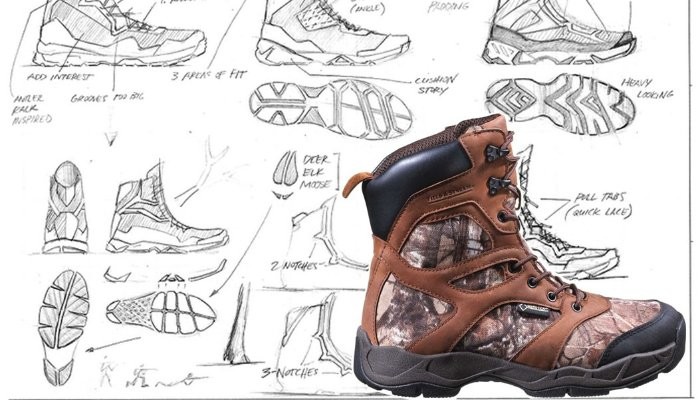
Field boots combine and balance various features, creating a more versatile design suitable for multiple hunting situations. They are constructed from either full-grain leather or synthetic materials such as nylon, polyester, neoprene, and synthetic leather.
Natural leather boots are more durable and suitable for heavy-duty applications such as traveling in rugged terrain. They also have molding capabilities, which allow them to shape your feet over time and provide additional comfort. However, leather hunting boots are heavier and take longer to break in than synthetic footwear.
Although synthetic boots are less expensive than leather boots, they are not necessarily less durable. Technological advancements have made leather-like durability a reality in synthetic boots, but expect to pay a premium for such performance.
In general, synthetic hunting boots are designed for light-duty use. They are also breathable and ideal for hunting in the Arizona desert and other similar climates.
2. Stiffness
You should select boot stiffness based on the geography of your hunting area. What works in one environment may not work in another. Boots that are too stiff can cause foot strain, while boots that lack stiffness can result in a twisted ankle.
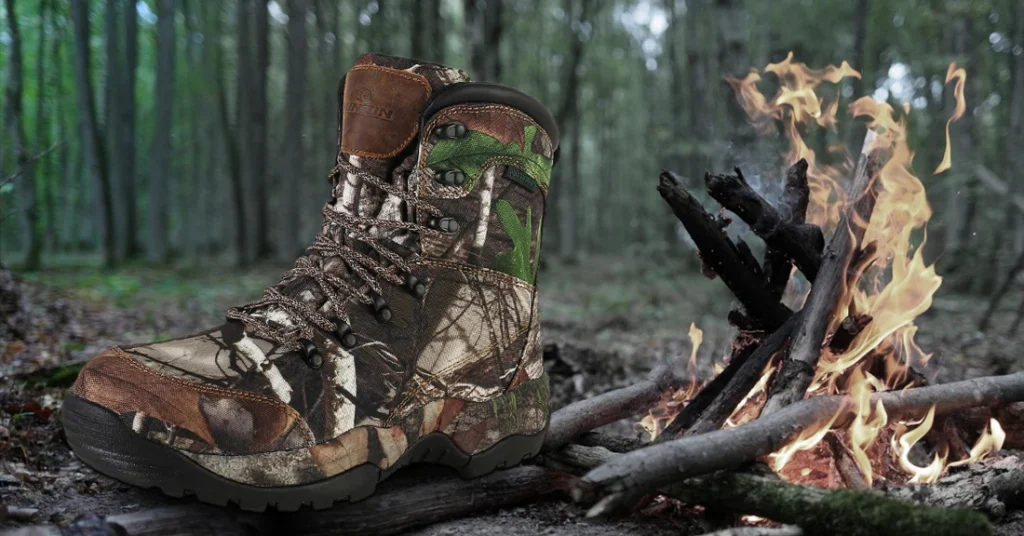
Let this simple logic guide your decision: more difficult terrain necessitates stiffer boots. You’ll need a pair of sturdy boots if you’re hunting sheep, deer, or elk in rugged terrain with shale rock and steep mountainsides. Flexible boots, on the other hand, are more appropriate for hunting in flat terrain.
Kenetrek produces some of the best backcountry hunting boots—the desire to create boots for harsh environments laid the entire company’s foundation. Mountain Extreme is Kenetrek’s primary source of revenue. These full-grain leather boots feature a 7mm midsole for added support and deep relief outsoles for improved traction.
3. Waterproof and breathable
Always having a pair of waterproof boots seems reasonable. Hunters frequently find themselves in damp environments, which is true, but do you require that level of protection? The thing is, while waterproof boots keep water out, they also keep sweat out. Things worsen as physical activity increases. A lack of breathability and constant friction causes blisters.
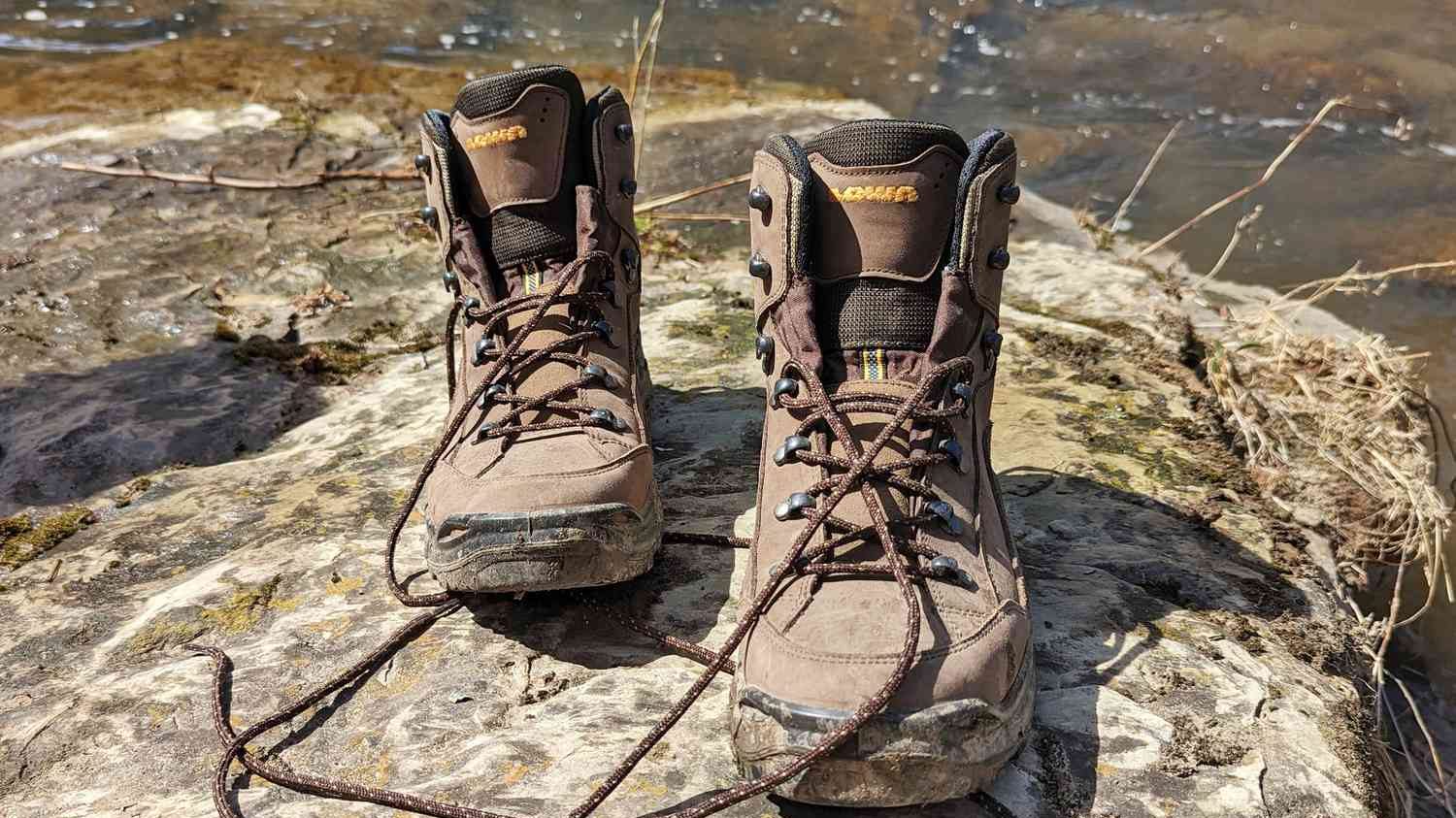
Waterproof boots are ideal for specialized applications. For example, the 100% waterproof DRAKE Mudder 2.0 boots with a 16″ neoprene upper are perfect for waterfowling.
You’ll usually be OK with water-resistant boots that repel minor amounts of water. Also, consider breathability and purchase highly breathable boots for high-output hunts in warm weather. For example, the Garmont Tactical T8 Bifida Wide is intended to be highly durable while still allowing your feet to breathe.
4. Insulation
Insulation can be achieved through a variety of means. The most obvious way to keep your feet warm in colder weather is to purchase boots with built-in insulation rated in grams.
Boots weighing between 0 and 200 grams are ideal for early-season deer or spring turkey hunting.
400-800 grams – ideal for high-volume hunts in the middle or late season.
One thousand grams or more – suitable for cold weather and low-activity hunting scenarios.
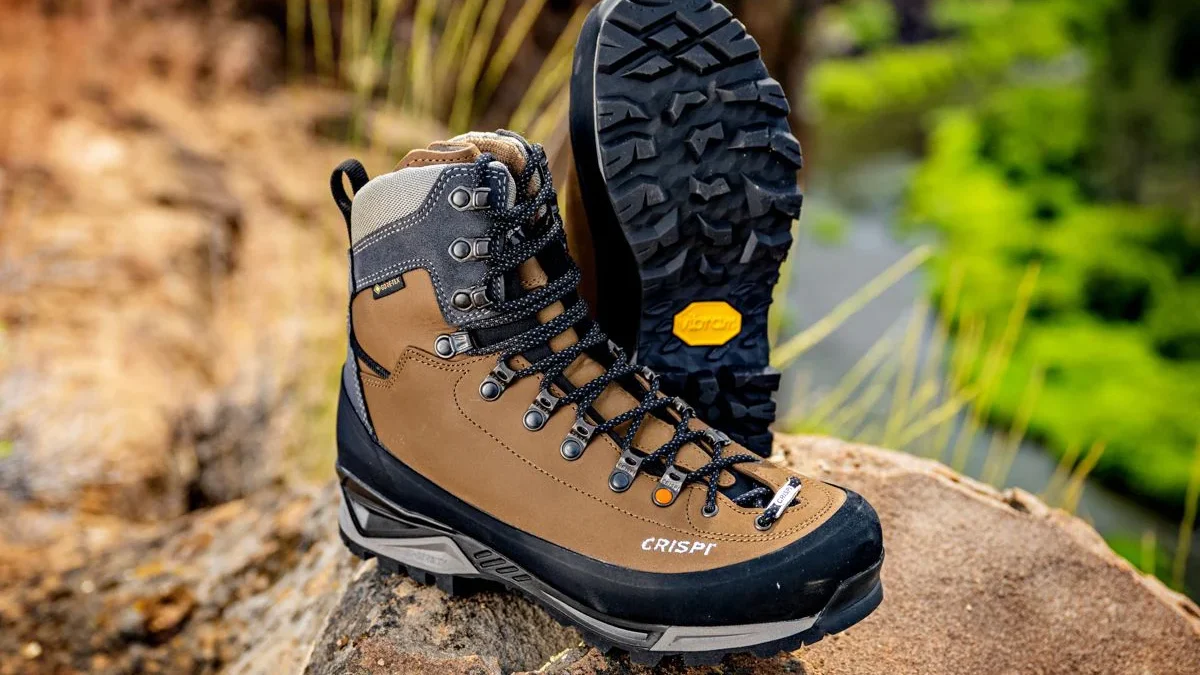
When selecting insulated boots, always consider the weather and level of physical activity and balance them. Most of the time, more insulation is needed. Highly insulated hunting boots are only helpful for treestand deer bowhunting or duck hunting from a blind, as you can’t keep your toes warm by moving around.
Warm socks can be worn with hunting boots that have lighter insulation. As a result, you will get lightweight boots that keep you warm in cold weather. Wool or wool blend socks are ideal for insulating your feet even when wet. They also have excellent moisture-wicking properties.
5. Fit
Proper sizing is critical for maintaining comfort during your hunts. Because of their specific application, hunting boots differ from regular footwear regarding fit. Consider what socks you want, and then choose hunting footwear.
Always try on boots with socks you intend to wear while hunting, not random socks you wore when you entered the store. Also, it’s best to try on boots when your feet are swollen late in the day.
Boots should fit snugly, not too tight to prevent blood circulation to your toes, and not too loose to allow your feet to slide forward. We recommend that you always use the same sock-boot system.
With wool socks available in various thicknesses, you may be tempted to switch them as the temperature changes. However, please don’t ignore it because it will disrupt your comfort.
FAQs
- How do I choose between rubber and field boots for hunting?
Rubber boots best suit muddy and wet environments like marshes and swamps, providing waterproof protection and scent control. Field boots, made of leather or synthetic blends, offer versatility for various hunting situations, with options for durability and breathability.
- What factors should I consider when determining the stiffness of hunting boots?
The stiffness of hunting boots should match the terrain you’ll be navigating. Stiffer boots are suitable for rugged terrain with steep inclines, providing ankle support, while flexible boots are more appropriate for flat terrains. Consider brands like Kenetrek, renowned for their sturdy boots designed for harsh environments.
- Are waterproof boots necessary for all hunting conditions?
Waterproof boots are essential for specific applications like waterfowl hunting but may only be needed in some scenarios. Water-resistant boots with breathability can suffice for most hunts, especially in warmer climates. Look for options like the DRAKE Mudder 2.0 for specialized waterproofing or breathable choices like the Garmont Tactical T8 Bifida Wide.
- How should I select the insulation level for hunting boots based on weather and activity?
Insulated hunting boots come in various levels, ranging from 0 to over 1000 grams, suited for different weather conditions and activity levels. Choose lighter insulation for early-season hunts and heavier insulation for colder weather or low-activity scenarios, balancing warmth with mobility. Consider complementing more lightweight insulation with warm socks for added comfort.
- What is the importance of proper fit when selecting hunting boots?
Ensuring a proper fit for hunting boots is crucial for comfort during long hunts. Select boots that fit snugly but not too tight to restrict circulation or too loose to cause slipping. Always try on boots with the socks you intend to wear during hunting, and consider factors like swelling feet during late-day fittings.
- How can I maintain consistent comfort with my hunting boot sock system?
Consistency in the sock-boot system is vital for maintaining comfort during hunts. Stick to the same socks you’ll wear during hunting to ensure a consistent fit and avoid discomfort disruptions, even with temperature changes. Opt for wool or wool blend socks for insulation and moisture-wicking properties, enhancing overall comfort.
Conclusion
When selecting the ideal hunting boots for outdoor excursions, it’s crucial to consider various factors without compromising comfort and performance. Boot design, whether opting for rubber boots tailored for muddy environments or versatile field boots crafted from natural or synthetic materials, sets the foundation for your hunting experience.
Moreover, striking the right balance of stiffness ensures stability across diverse terrains, whether navigating rugged mountainsides or flat landscapes. Additionally, assessing the need for waterproofing and breathability dictates the level of protection and comfort required, especially during prolonged hunts or in warm climates.
Tailored to weather conditions and activity levels, insulation is pivotal in keeping feet warm without hindering mobility. Lastly, prioritizing proper fit, considering sock-boot compatibility and sizing ensures optimal comfort and support during extended hunts.
By meticulously evaluating these factors, you can confidently select hunting boots that enhance your outdoor adventures while keeping your feet comfortable and protected.

